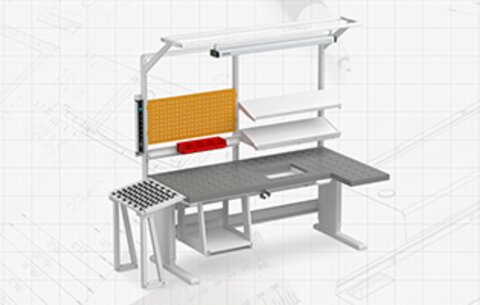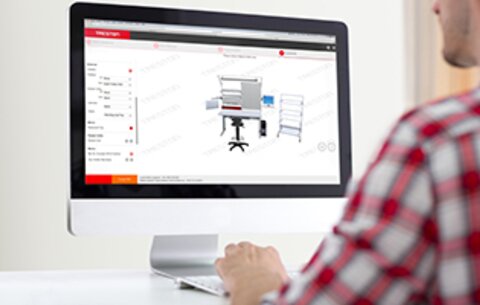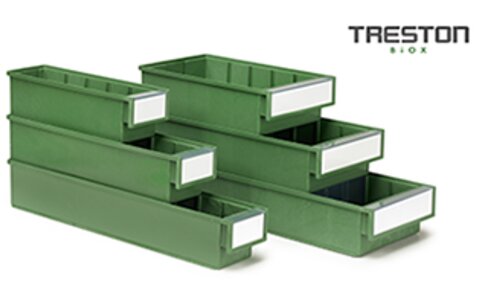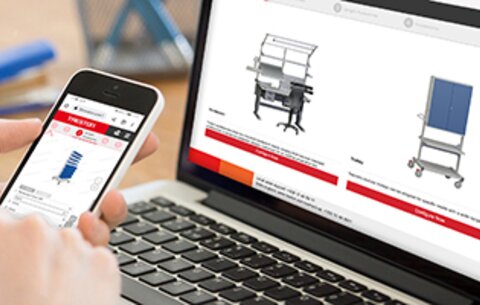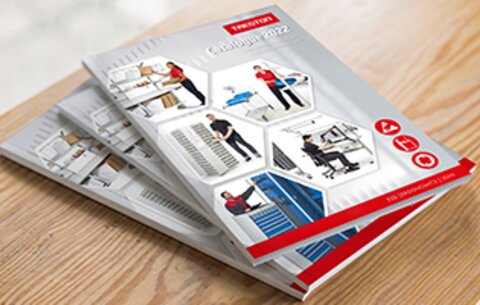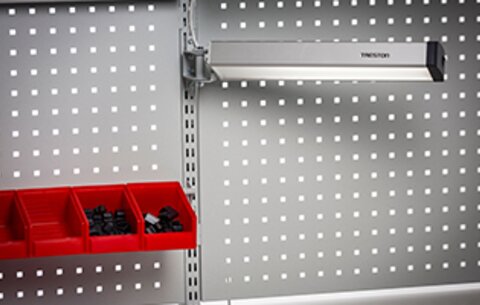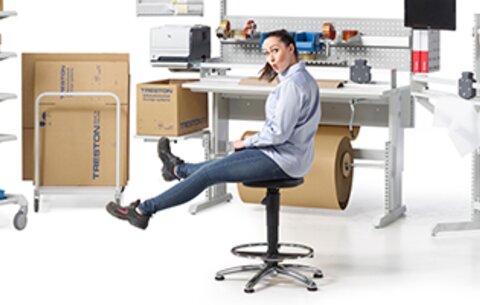

2-Minute Guide to Workplace Ergonomics

Carissa Harris
Anthropometrics in Workplace Ergonomics
Anthropometry, by definition, is the measurement of the size and proportions of the human body. Understanding how the average person is built is essential when designing products for comfort and safety. Ergonomics seeks to use these measurements to design workspaces that are as efficient, as comfortable, and as safe as possible. A properly designed ergonomic workspace will drastically improve productivity in a company, and boost profits.
Reach Zones
One aspect of anthropometrics that is used in ergonomic workspace design is the length of a human arm. Using the average, ergonomists can determine where objects should be placed in a workspace so that the work is being done comfortably and efficiently. Reach zones are the locations where work is done and are divided into horizontal and vertical zones. The chart below shows the 3 reach zones and their average length in inches.
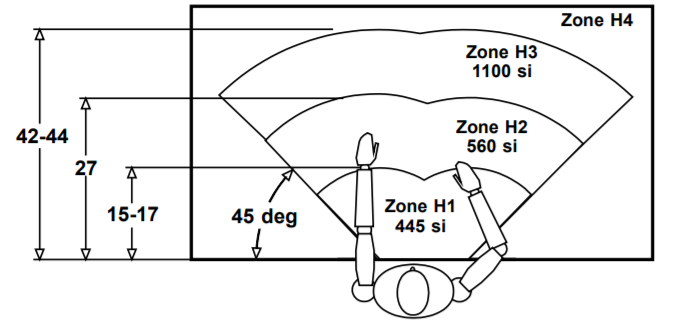 |
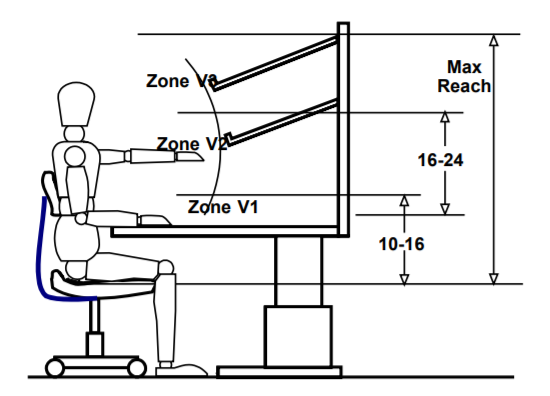 |
Zone 1 (Primary or Neutral Zone)
Zone H1 is considered the neutral reach zone and is the area on the horizontal plane within easy access of a bent elbow. This zone is where work is being done and is the most comfortable. Zone V1 is also neutral and includes the area immediately above and below the worksurface (approx. 5”-8”). Zone 1 should contain all items that are needed most often, such as your keyboard and mouse, or pen and paper.
Zone 2 (Secondary or Maximum Reach Zone)
Zones H2 and V2 are the locations that can be reached by extending the arm. This is the area where items are stored so they are within reach of your fingertips. These items should be those that are needed less frequently, such as books, folders or tools. These items are easy to reach when needed but are kept just outside of the main working area.
Zone 3 (Outer or Extended Reach Zone)
The next reach zones are zones H3 and V3 and is reachable by extending the elbow and leaning at the waist. Objects located in this zone should be items that are rarely needed, as the reach position is not comfortable and reaching this way frequently could cause injury over time. Any items outside of this zone should be for storage only.
Storage
To avoid injury, any items not used often should be stored away from the working area. Cabinets located next to a workstation can provide great storage that is still easily accessed from the main working area. Carts are another great way to bring stored items closer to your work, and when positioned next to or under the table can fall into the secondary or tertiary work zones.
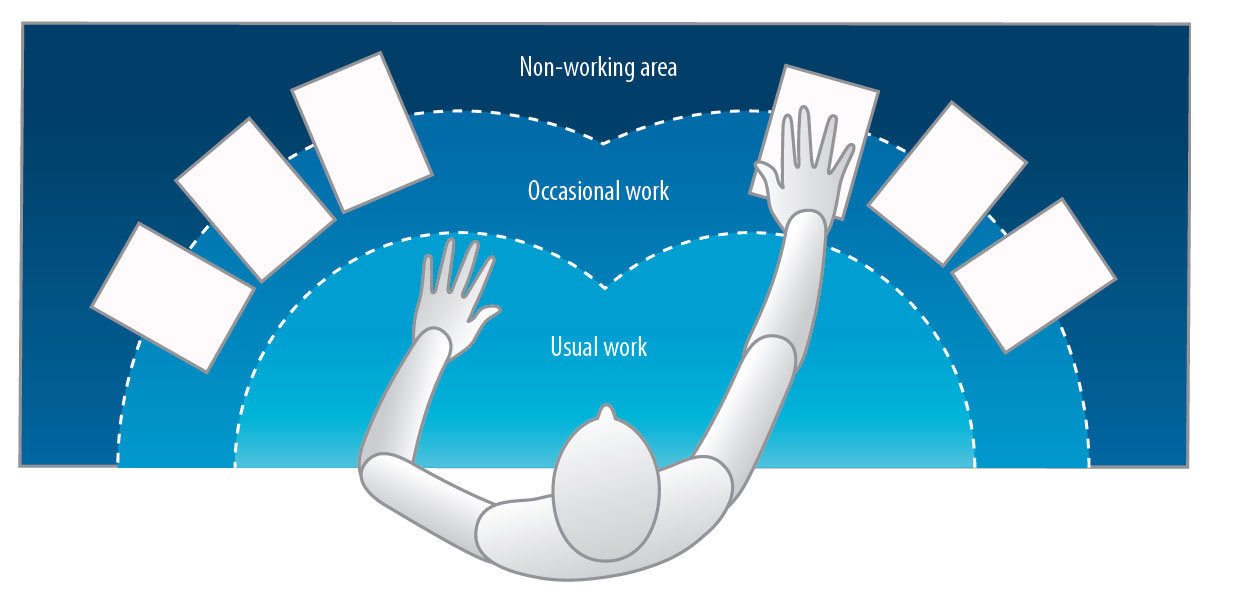
Why are Reach Zones Important to an Ergonomic Workplace?
Maintaining a comfortable working position is important for worker health and safety. Reaching outside of the neutral zone can cause musculoskeletal disorders (MSDs) that result in worker absences and medical costs. But the benefits of proper ergonomic working positions can have a greater impact that isn’t as obvious. Reducing unnecessary reach and positioning tools and equipment close to the neutral zone creates an efficient and productive workplace. When workers can do their work quickly and comfortably, businesses can expect to see boosts in profits and customer satisfaction.
Build Your Ergonomic Workplace With Treston Today
Are you ready to get started? Take the next step online with the help of the Treston team and our many resources. Explore our Ergonomic Workspace Product Catalog for more details on the benefits of ergonomic workplaces and our inventory of products that are designed to achieve this. Or, Design Your Workstation online with our 3D digital experience to visualize the future of your workspace. Our experts are just an email or phone call away to help you improve productivity, safety, and profits.

